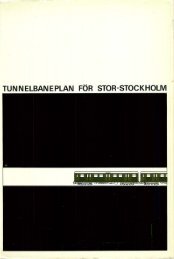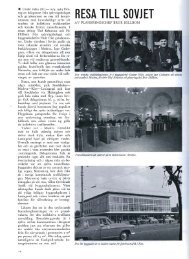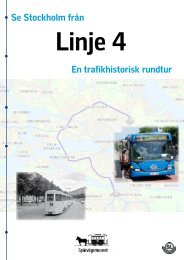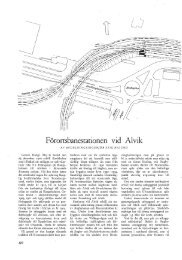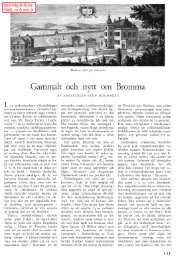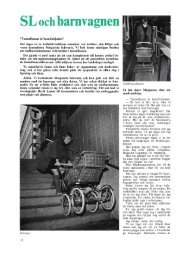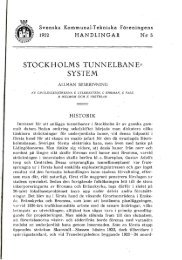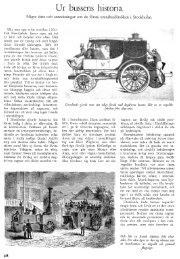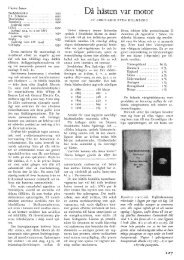Reliability of Stockholm Subway - Index of
Reliability of Stockholm Subway - Index of
Reliability of Stockholm Subway - Index of
You also want an ePaper? Increase the reach of your titles
YUMPU automatically turns print PDFs into web optimized ePapers that Google loves.
Chapter 2: Literature review<br />
Early research on reliability initially was carried out for bus transit. Nowadays bus is<br />
the most studied mode concerning the question <strong>of</strong> reliability and reliability measures.<br />
The railway and bus transit systems have in set terms many similarities which creates<br />
a good basement for bench marketing in technology <strong>of</strong> performance evaluation<br />
between the modes. For example, Bertini and El-Geneidy (2003) discuss in their<br />
paper the advantages <strong>of</strong> data collected by a bus dispatch system relatively to manually<br />
data collection. They demonstrate the possibility to convert the data into potentially<br />
valuable transit performance measures proposed in TCQSM. They also develop the<br />
idea <strong>of</strong> systematic using <strong>of</strong> transit measures in order to improve the quality and<br />
reliability <strong>of</strong> transit agency service, leading to improvements to customers and<br />
operators alike.<br />
Seung-Young Kho and et. (2005) develop punctuality indices <strong>of</strong> bus operation at bus<br />
stops in their paper using GPS data gathered for several bus routes in Seoul, South<br />
Korea. They <strong>of</strong>fer three indices; the first one is modified index which indicates bus<br />
adherence. It is similar to on-time performance in TCQSM but considers data<br />
variance. The second index determinates regularity <strong>of</strong> the service and is analogous to<br />
the headway adherence in TCQSM. The third index is evenness <strong>of</strong> bus service. It<br />
reflects the magnitude <strong>of</strong> time gap between average headway <strong>of</strong> a day and the<br />
headway <strong>of</strong> successive buses which they propose to apply in order to evaluate service<br />
quality <strong>of</strong> the route as well as effects <strong>of</strong> service improvements.<br />
<strong>Reliability</strong> is also a question <strong>of</strong> interest for performance analysis <strong>of</strong> heavy and light<br />
rail transportation. Carey (1999) studies the heuristic measures in his paper in order to<br />
estimate reliability and punctuality <strong>of</strong> train service. He reasons that there are various<br />
methods to measure reliability: analytical ones, but they are usually practical for very<br />
simple structured systems, then simulations, but they could be sometimes time<br />
17




